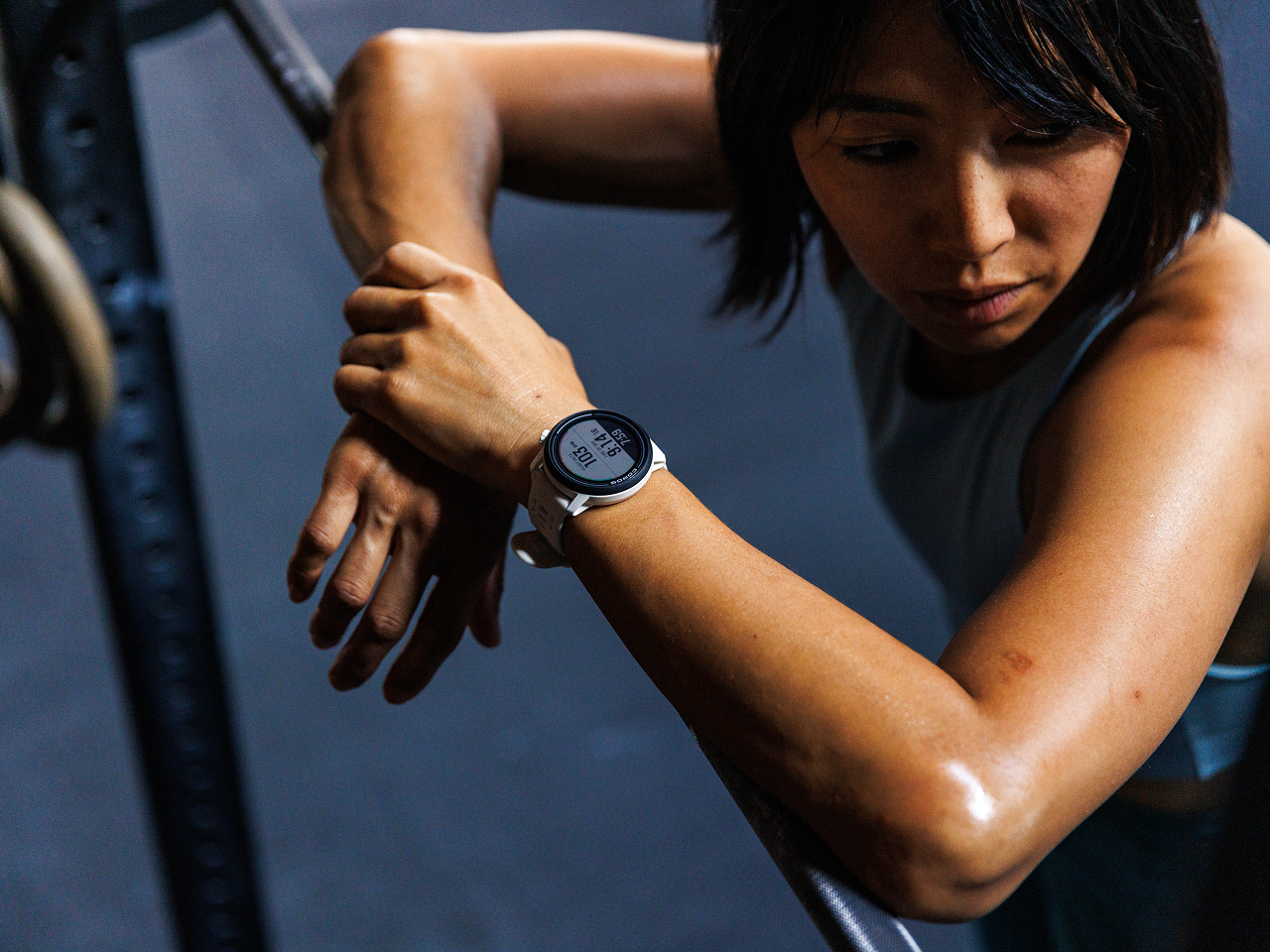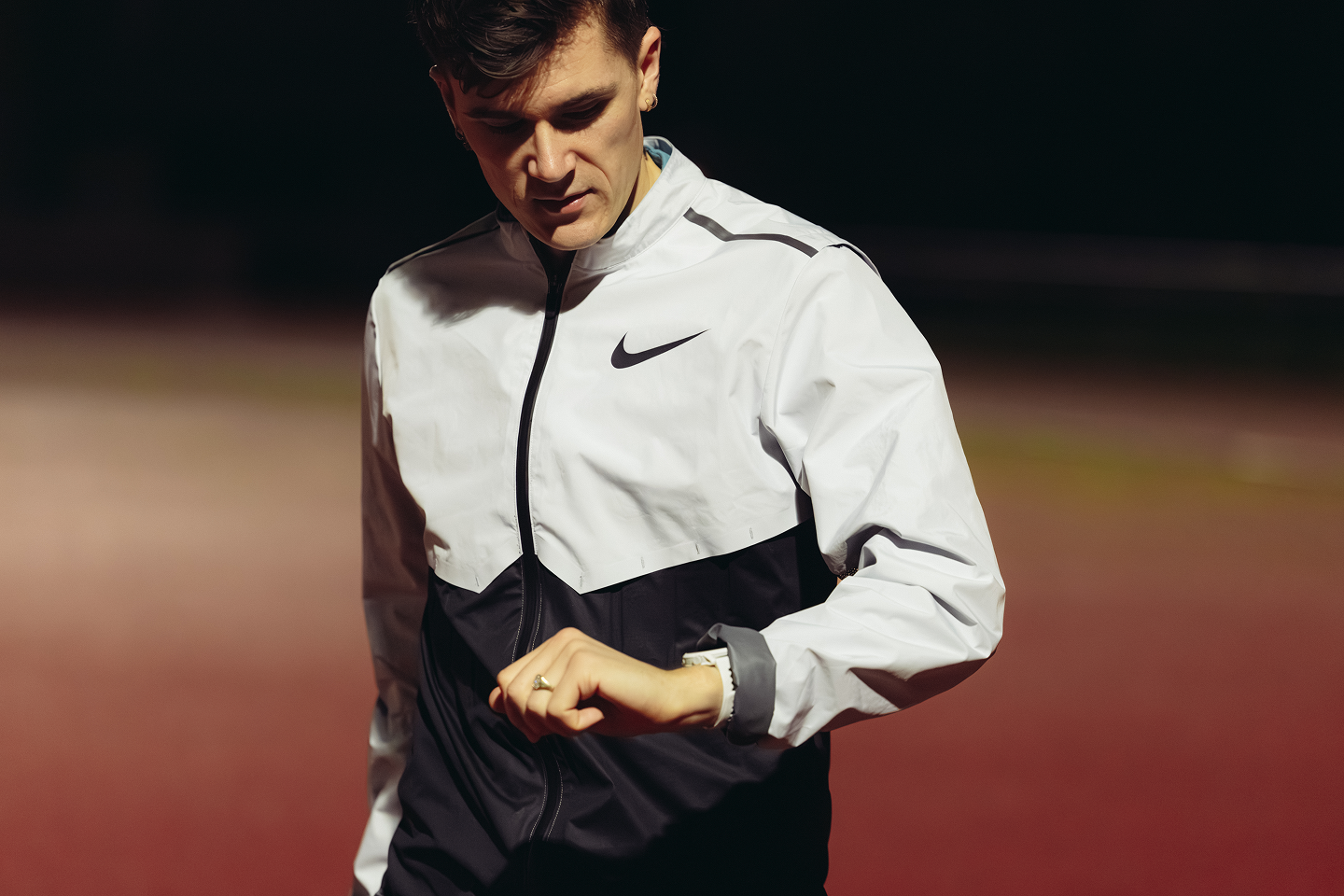Many of you have reached out to COROS Coaches after taking the Running Form Test with questions about what eccentric strength training is and how to incorporate it into your training. Read more below about this type of exercise and even download a new eccentric lower body-focused workout!
Running Form Test Evaluation
Upon completing the Running Form Test, you'll receive an Evaluation Summary highlighting your strengths and weaknesses. To improve your running form, it's important to include exercises that target the muscles utilized in running. Your workouts should consist of a blend of unilateral exercises, engaging one side at a time, and compound exercises that activate multiple muscle groups simultaneously.
Don't try to fix everything at once! Concentrate on one aspect of your form at a time during runs. Dedicate 30-second intervals to focus on refining a specific skill, such as arm swing, knee drive, or foot landing. Once it starts feeling easier, move on to something else. By taking it one step at a time, you'll improve without feeling overwhelmed.
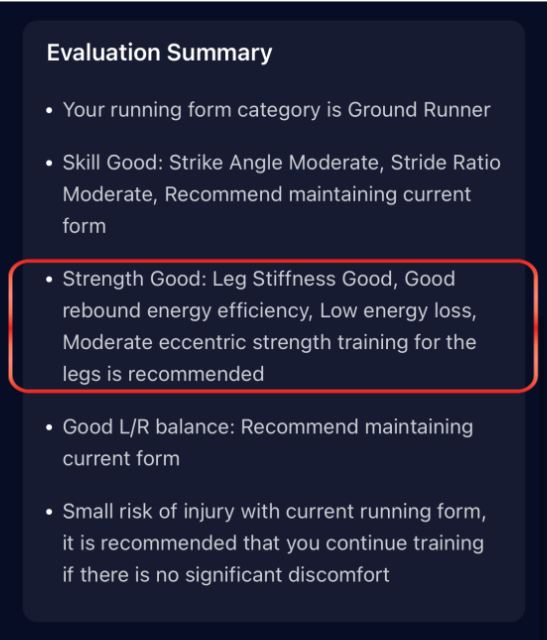
Evaluation Summary from the Running Form Test.
Introduction to Eccentric Training
Incorporating eccentric exercises into your training as a runner can help to strengthen your running form. These exercises focus on the phase where muscles lengthen, helping to strengthen them while they're under tension. This is important for keeping in control when your feet hit the ground with each step. Eccentric exercises target important muscles like the quads, hamstrings, and calves, which are key for slowing down and keeping you steady while you run.
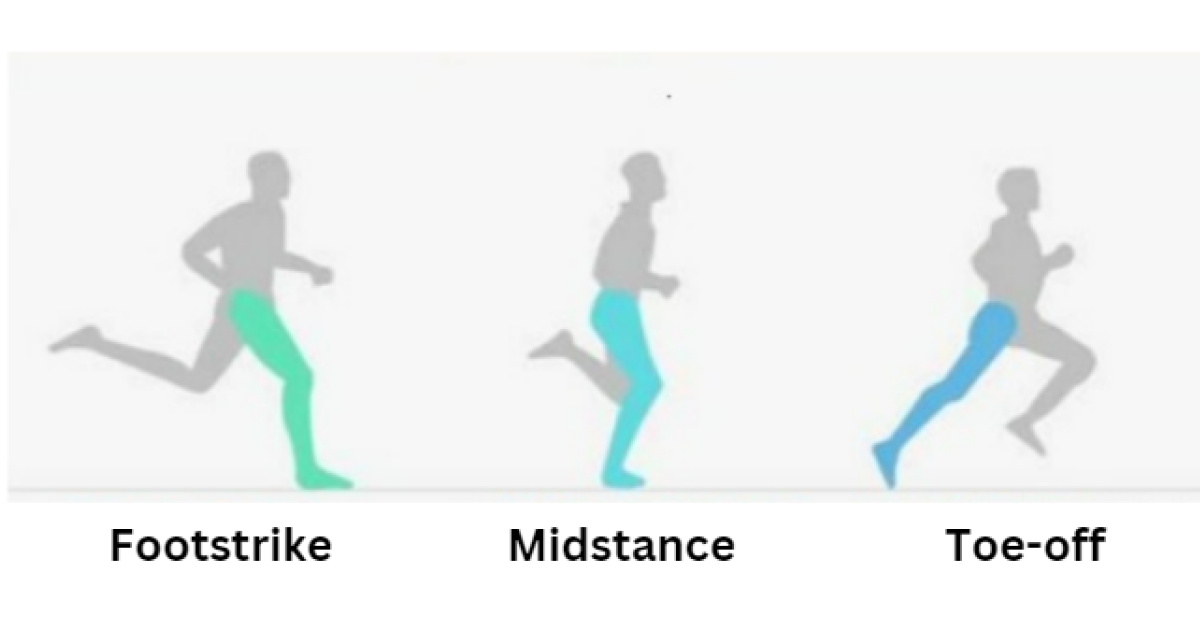
https://www.physio-pedia.com/Running_Biomechanics
Here is a breakdown of the three running phases and how eccentric training applies:
- Foot Strike (eccentric): This is when your foot makes contact with the ground. Your muscles work to slow down your body as your foot lands on the ground.
- Midstance (isometric): This is when your muscles keep you balanced and stable while your weight is on one leg. They help control how your foot rolls inward or outward to make sure it lands correctly and handles the weight properly.
- Toe-off (concentric): This is when your foot pushes off the ground to move your body forward.
Understanding these phases helps you see how your muscles work together to maintain balance, absorb impact, and propel you forward while running.
How Does Eccentric Training Translate to Strength Training?
All types of exercises can be done following an eccentric training type. Read below as COROS Coaches use a squat as a specific example.
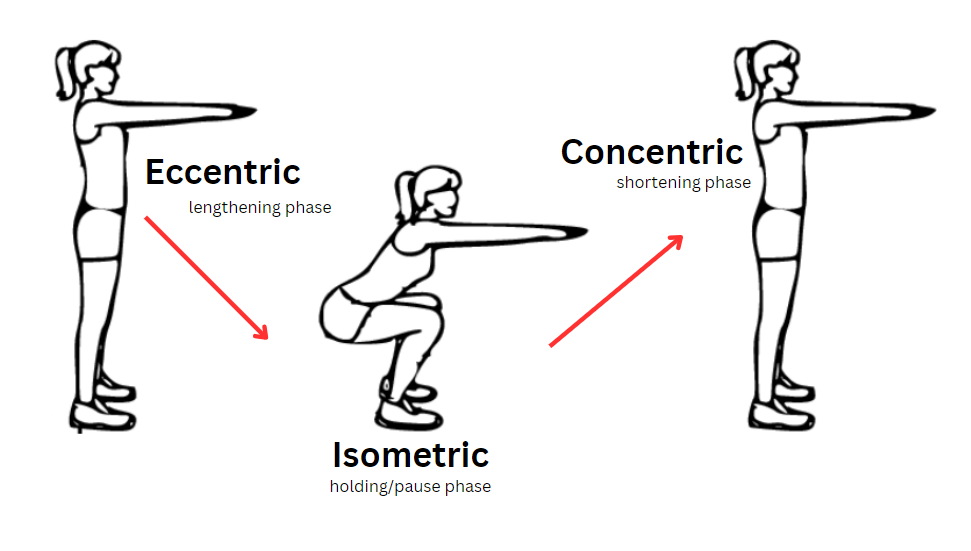
DOI: 10.1017/wtc.2021.6
Here is a breakdown of the three squat phases and how eccentric training applies:
| Movement Phase | Lowering | Holding | Raising |
| Description | involves slowly lowering your body down into the squat position. | Bottom position of the squat. | Pushing your body upward out of the squat position. |
| Training Phase | Eccentric | Isometric | Concentric |
| Time | 3-5 sec | 1-3 sec | 1-2 sec |
How to turn a standard squat into an eccentric-focused exercise? Slow down the lowering phase for 3-5 seconds.
You can easily incorporate eccentric training into exercises you're likely already doing. Take squats, deadlifts, and calf raises, for example. Instead of just going through the motions, add a four-second count during the lowering phase of each movement. This simple adjustment emphasizes the eccentric phase, enhancing muscle strength and control. These exercises will improve your ability to maintain proper form, stride mechanics, and foot placement during runs.
The Workout
Eccentric Lower Body Workout: 30-minute workout comprised of exercises that should be completed on both legs. This workout can be added to your training plan 1-2 times a week.
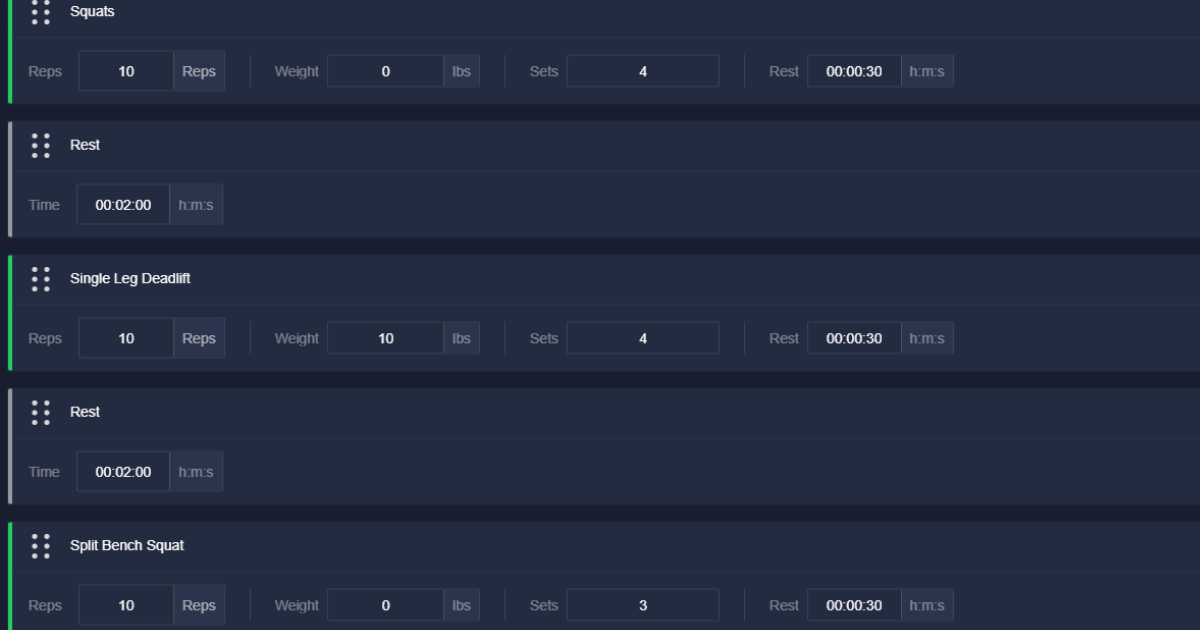
Example of part of the lower body workout.
How to complete an eccentric exercise:
- Lower your body or the weight slowly with control for a count of 4 seconds
- Raise your body or the weight back up for a count of 1 second
- Repeat for the suggested amount of reps
- Only increase the resistance once you feel comfortable and are not compromising form
Maintain proper form throughout the exercise to avoid getting injured. Keep your core engaged, your spine neutral, and your movements smooth and controlled.
More Questions?
If you have questions about this workout or want to go over your results from your running form test, email us at coach@coros.com, and we will be happy to share insights!

/filters:quality(90)/fit-in/970x750/coros-web-faq/upload/images/4f5371936c048b4341fbb511ea4bbe8c.png)


